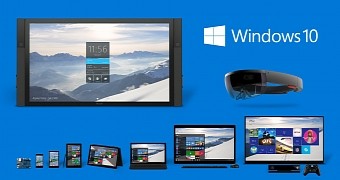The United States government is transitioning to Windows 10 as part of a partnership with Microsoft, and organizations like the Department of Defense have already deployed the operating system on a big number of computers within their networks.
The US DoD itself attempted to adopt an “aggressive stance,” according to Randall Conway, DOD deputy CIO for information enterprise, cited by FedTechMagazine.
“The security features were one of the primary reasons. It was important to us to be as protective as possible with our end-user systems. It also provided us a move toward a standard operating system. At some point you have to ask, how many versions of a Microsoft operating system do we want in the department? We thought, now is the time. Why wait? Let’s get started,” he said, praising the security features integrated by Microsoft into Windows 10.
Security isn’t the only Windows 10 feature that’s praised by the new adopters of the operating system. Feds are also impressed with how fast Windows 10 proves to be, pointing out that it can boot 30 percent faster than its predecessors. Application performance is also substantially improved, they say.
App compatibility issues
The TSA itself attempted to accelerate the move to Windows 10 using a refresh of the existing hardware, which was up to 6 years old. Performing hardware upgrades was estimated to be more expensive than a full replacement of outdated systems, so the TSA used this occasion to install new systems, but at the same time, to also adopt more tablets that would increase portability.
App compatibility has been one particular issue that organizations had to deal with during the migration and Guy Cavallo, the former executive director of IT operations for the Transportation Security Administration, explains that developers have been contacted to optimize their apps for Windows 10.
“One application was built for Windows XP and was never upgraded, and we found that it tends to freeze. We’re helping the vendor figure out how to rewrite their code to make it compatible with Windows 10,” he said.
The Pentagon originally planned to complete the migration to Windows 10 by January 2017, but this target has already been missed, especially because of the roadblocks they hit during the process. The switch, however, continues, and most agencies estimate it to complete in the fall of this year when Windows 10 should be running on all their computers.

 14 DAY TRIAL //
14 DAY TRIAL //